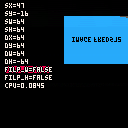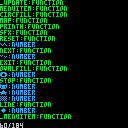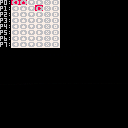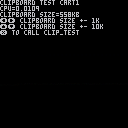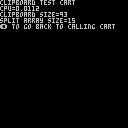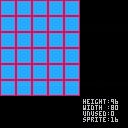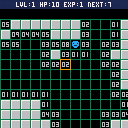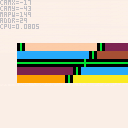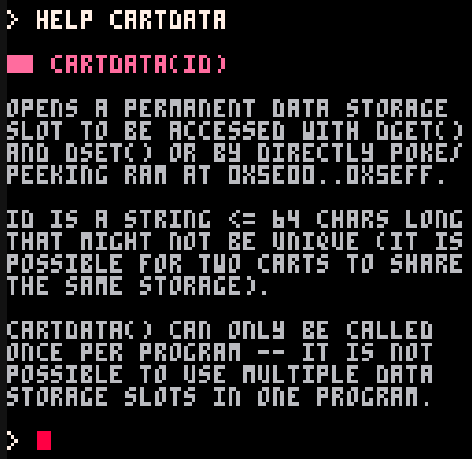
Officially, you can't use multiple data storage one one program.
This feels mostly true, but very similar in spirit to statements like "pico-8 has 16 colors".
"cartdata() can only be called once per program", is already less restrictive :
You could have a game that uses 3 save slots, each with a different cartdata ID because each save requires most or all of the 256 bytes of a cartdata storage, and let the player choose his slot at start of the program. You'd only ever call cartdata once per game session, but would have three storage slots used in one program.
This would still not be great because you can't display any info about the slots before loading them so the player would have to blindly load a slot, see if it's the save he intended to use, and reset the game if he made a mistake.
Could we do that programmatically ? Turns out that yes, we can :
extcmd("reset")
Does reset the cart. Problem is, how do we remember what the previously viewed storage was, or what we were doing before triggering the reset ?
SSPR sandbox
According to the documentation, sspr is pretty self explanatory :
QUOTE
SSPR(SX, SY, SW, SH, DX, DY, [DW, DH], [FLIP_X], [FLIP_Y]]
Stretch a rectangle of the sprite sheet (sx, sy, sw, sh) to a destination rectangle on the screen (dx, dy, dw, dh). In both cases, the x and y values are coordinates (in pixels) of the rectangle's top left corner, with a width of w, h.
Colour 0 drawn as transparent by default (see PALT())
dw, dh defaults to sw, sh
When FLIP_X is TRUE, flip horizontally.
When FLIP_Y is TRUE, flip vertically.
END OF QUOTE
So I was pretty surprised to see an upside down sprite while debugging, when I knew I wasn't even using the flip parameters anywhere.
Things are pretty normal as long as the coordinates are in the 0-127 range and the sizes in the 1-128.
What happens otherwise is unclear, so I wrote this little test cart. (image in the sprite sheet by Freds72)
User @taxicomics started a thread compiling fades and transitions code snippets https://www.lexaloffle.com/bbs/?tid=148256
I though I'd add my screen dissolve effect, base on a 14 bit variation of the xorshift algorithm
https://en.wikipedia.org/wiki/Xorshift
The shift parameters used are >>3 <<1 >>4 . It's not good as a random generator, but that's a property I don't care about in this context, and amongst the many triplets that give the maximum cycle length needed to progressively blacken every screen pixel, it's the easiest to remember : 314 is the start of pi and 14 is the number of bits.
It works as expected for the first 2/3 of the screen, but after that, the CPU load goes over 100%, and the frame skips makes the animation end in awful looking flicker :
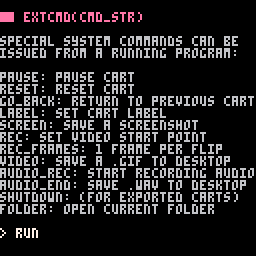
function fade(progress) pset(0,0,0) local s=1 while progress>0 do s^^=s\8 s^^=s<<1 s&=0x3fff s^^=s\16 pset(s\128,s%128,0) [ [size=16][color=#ffaabb] [ Continue Reading.. ] [/color][/size] ](/bbs/?pid=165609#p) |
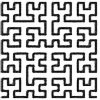


To ping a user in a post, you usually just type @ directly followed by their user name.
This sometimes fails if the user has special characters in their name.
For example, to ping @Peter Mosevich that has a space in his user name (how are you buddy ? any new pico-8 cart or puzzlescript in preparation ?), you can use @ then { then the user name with the space, then }.
This has worked for me so far, but today, I tried to ping a user (cat-8) that has a minus sign in his user name, and I ended up pinging user cat instead (sorry).
Does anyone know how to properly ping such a user ?


While looking at an empty project in the built-in pico-8, I thought about the default map/sprite options available without extra code.
There are the two classic approaches :
1) use the shared map/sprite area for sprites.
We get 256 tiles with 8bit flags, and a map 2 screens tall and 8 screens wide.
2) use the shared area for map.
We get 128 tiles, and a 4 screen tall and 8 screens wide map.
We can also use a hybrid of the two, where the bottom of the shared space is used for sprites, while keeping the map rectangular...
Option 1 is efficient, IE every bit counts, while option 2 is pretty wasteful :
in the map, every tile index is in the 0-127 range, but still uses one byte. That's 20% of the map data forced to be zero.
Flags for tiles 128-255 are also unused...
What if these unused spaces had had significance ?
For example, the tiles 128-255 could have been a horizontal mirrors of the tiles 0-127.
Maybe instead, two of the flags of each tile in the 128-255 range could be used as horizontal and vertical mirror ? That would save a few tiles, but in tile sets, you often have the 4 versions (normal, HFLIP VFLIP H&VFLIP), or even eight if 90° rotation is also needed.


Pancelor suggested in Beam's thread to start a new thread for technical discussion in order not to clutter the game's thread. I fully agree with the idea and I'm sorry for cluttering.
Here's what Pancelor wrote :
- you can replace the body of get_random_bird_name() with this: return del(bird_names,rnd(bird_names)) or "♥"
- you can replace p.velocity_x=p.velocity_x+i_xp.acceleration with p.velocity_x+=i_xp.acceleration, etc
- you should be able to remove tfnsplit altogether, by saying things like a,b,c,d=unpack_split"1,2" (which does the same thing as a,b,c,d=1,2,nil,nil. this one will probably take some more explanation)
End of Quote
About the 3rd point :
when doing a multi assignation, it still works if the number of elements does not match :
a,b,c=1,2,3,4
a is 1, b is 2, c is 3, 4 is discarded.
a,b,c=1,2
a is 1, b is 2, c is nil ([NIL] when printed.)
Now a word about what is considered true and false in LUA :
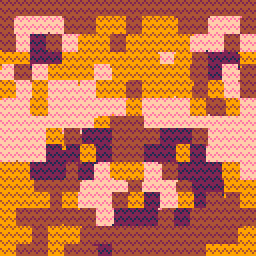


I was browsing the _ENV content, hoping to find the modulo and integer division function exposed (no luck) with this quickly written cart (not even alphabetic sorting)
Amongst the unknowns to me, there is a mysterious radio() function.
I tried to call it with different parameters, and only got [nil],0 as return values.
Does anyone know more about that ?
One of the games I used to play the most was populous.
While some of my friends could play it with beautiful graphics on their amiga or atari ST :
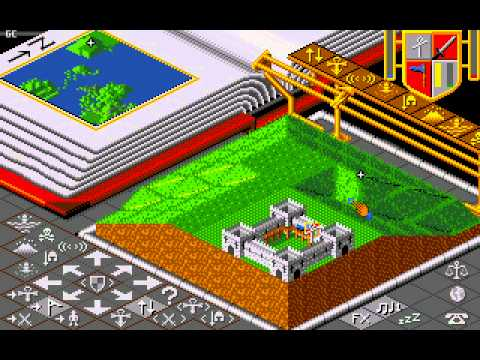
I was playing on a slow TO-16 PC compatible with CGA graphics and a monochrome green screen. You can't even find an online picture of a setting that bad for this game, the closest I could find online was color CGA that is actually almost as bad looking as the green version.
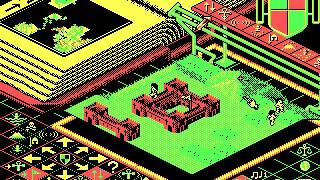
Despite the visuals, I was hooked and somehow managed to finish the game (level 400 something), using every possible trick available. (save scumming so the "random" swamps would always spawn under the enemy's knights feet, abusing the bad AI when possible (enemy flood that insta-kill every single enemy unit was the most memorable), using a bug that allowed to raise the terrain to level 1 on levels where it was disabled...).
Despite all that, after level 400, the building speed of the computer was just insane : he would add a block every frame (around 4 times per second on my crappy PC), making enemy progressing absolutely overwhelming.

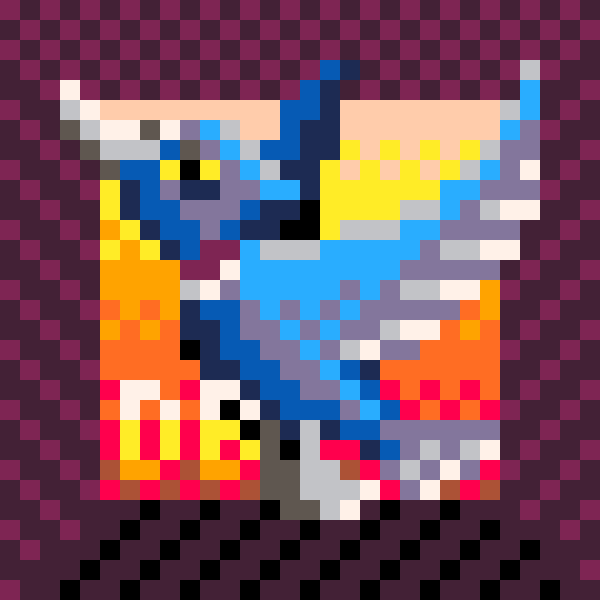

Hello everyone, I'm thinking about de-making Xblast, a linux clone of bomberman that allows up to 6 players at the same time.
Here's a early WIP screenshot :
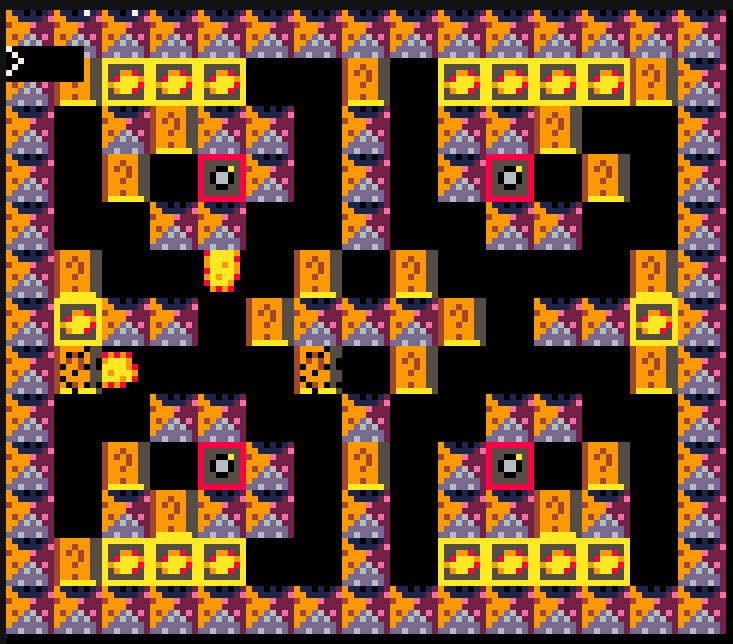
What I'm worried about now is the 6 players local game play.
On paper, Pico-8 has native support of up to 8 controllers.
I wrote a simple cart that just highlights in red the active buttons of the 8 controllers.
Could anyone confirm that this actually works for up to six controllers before I go further into the dev ?
I'm a bit worried as I've never encountered a pico8 game that plays with more than two controllers at the same time so far.
If you get it it to highlight buttons of players 3 to 7, could you please tell me how you set it up ?
One of the simple examples in the LUA documentation for metamethods is to implement set logic on tables.
s1+s2 returns a new set that is the union of the two by defining __add, s1*s2 returns the intersection thanks to __mul, so far so good.
There is also the very useful __index and __newindex to handle reads and writes to unassigned indexes of the table, but the very important assignation metamethod at table level seem to silently not exist, as if it were of no use.
when I do
set1=set2
followed by
set2=set2+{new_elem}
I most certainly didn't mean for set1 to be changed.
There's of course plenty ow ways to force the behavior I wanted :
set1=set2+{}
would work.
We could define a set_copy function
set1=set_copy(s2)
But there seem to be no way to override the assignation behavior, like we would redefine the = operator of a class in C++ for example.
Could someone please shed some light on the subject ? What is the reason behind this omission ?



First, a big thank you for fixing the code viewing functionality of BBS pico-8 carts.
Now for the ping related problems :
when a user has a space or a minus sign in his user name, the ping is either lost, or worse sent to another user :
For example, user Peter Mosevich won't get pinged because of the space, but unrelated user Peter will.
Support for something like @Peter Mosevich with documentation in the Formatting Help would be welcome.

Title says it all.
I'm making a horizontal scrolling game with a map 32 screen wide and 1 screen tall, and with the player using extra colors different from the enemy colors. (enemies can't be over or under the player).
For this, I'm using screen rotation, but now I can't use print to display text any more as it appears rotated.
Has anyone already implemented a 90° rotated print function ?



A bug fix version of mamono pico by @65c02
https://www.lexaloffle.com/bbs/?pid=128341
Fixed :
- crashing at end of levels
- impossible to win levels
- not dying when killed by a monster that would have made you level up
Remaining known bugs :
- you can mark a monster even after killing it, and this can disable showing the red number of the monster
- some rare crashes from menu after game over, unknown cause.
Done :
- damage is now the same as the original game
Todo :
- blank pause menu
- Remaining ennemy count in status bar
- timer
- high scores
- Max difficulty
- custom levels
- wraparoud
- mage (fireball chording)




Just a sandbox to get a better understanding of what happens when you change the map width (0x5f57) and the map address (0x5F56)
Upper memory 0x8000-0xFFFF is fully initialized to 53 (blue square sprite)
Arrow keys to move the camera
X / O to change the map width
pause menu to change what X/O changes between map width and map address.
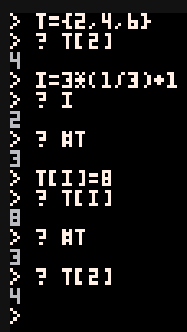
I've spent two hours fixing a nasty bug. The image above is essentially the bug I was trying to fix, except all the steps were spread in three functions, and took a good minute of playing on average before everything aligned just right (or just wrong depending on how you look at it) for it to seemingly randomly occur.
Can you figure out why t[2] is not 8 in the end ?
Hint : Lua arrays and # operator are cursed.
Ideally, I'd like the game to crash at t[i]=8 if possible. Anyone knows if you can add some sanity checks to all array accesses ?





A lot of old games save space by using the same data for multiple purposes. I’ve seen code used as graphics, code inside graphics, graphics containing map data, and was daydreaming what parts of pico8 could be interesting to use as double purpose.
The game thumbnail seems very promising : 128x128 32 Colors is 10Kb worth which is pretty big for pico8.
There ´s nohing in the api related to it, just a keyboard shortcut to save the current screen to it. It’s hidden when using the built in editor, but you can see it when viewing a .p8 file.
I’m a newbie in lua, and don’t know if it’s a valid lua section, or maybe a type of multi line named comment designed for documentation for example.
Or maybe it’s just part of the .p8 format and never passed to the interpreter ?
If there’s a way in code to interact with it, I’d love to know.
Or maybe the source code is somehow in the scope of the program and can be opened and parsed ?


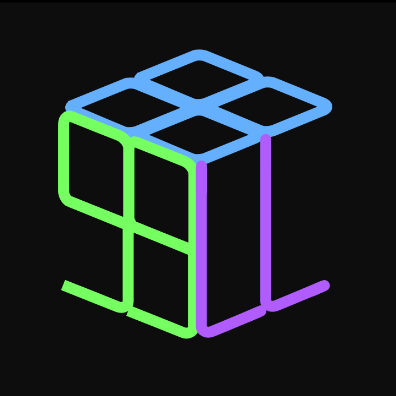





 0 comments
0 comments

